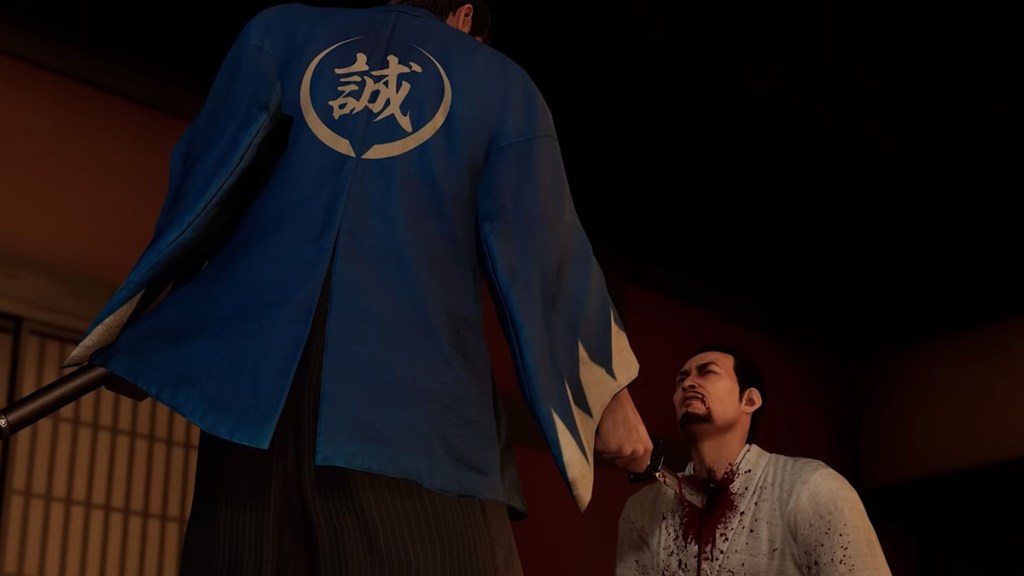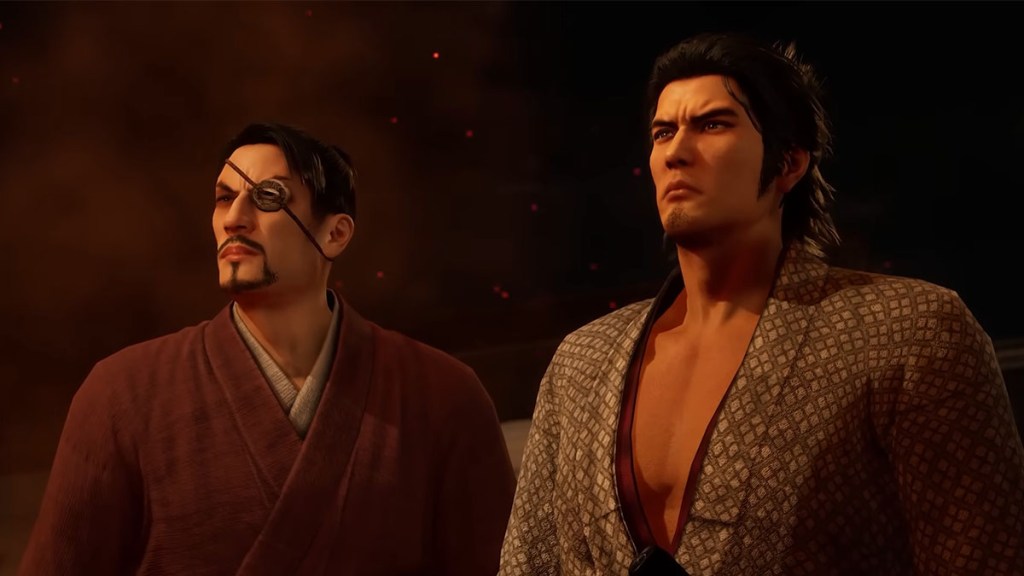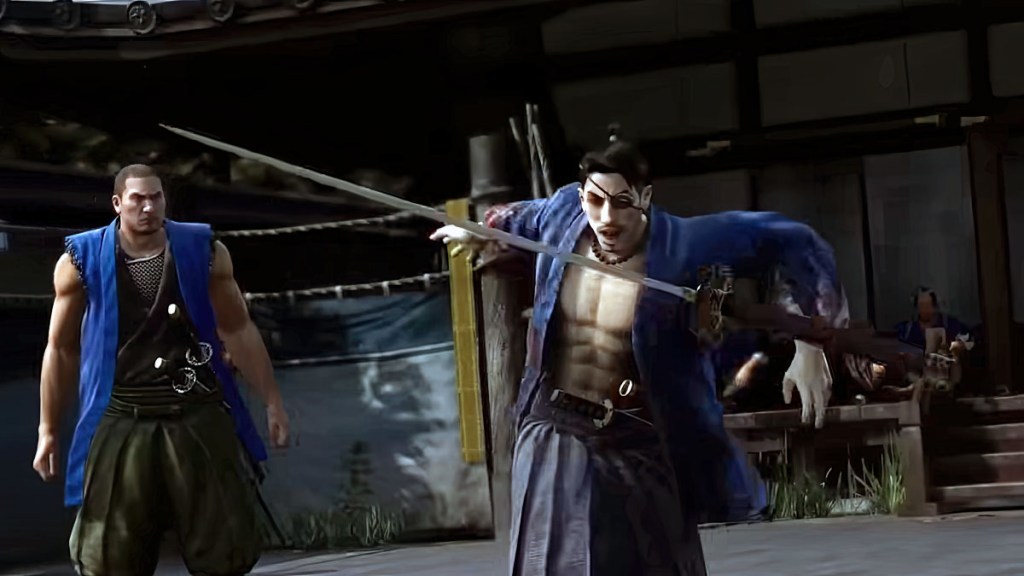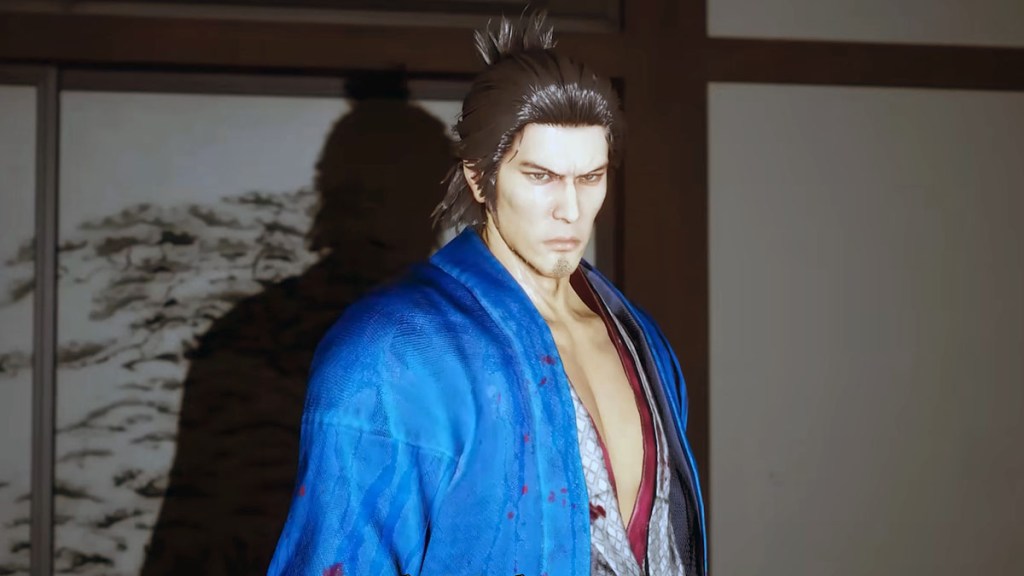We’ve wanted to see a Like a Dragon: Ishin release outside of Japan for years, and the day has finally come. This spin-off is a massive departure from the neon lights and gangster-filled streets of Kamurocho. Instead, it’s a historical drama with Yakuza flare, which is sure to delight some fans of the series and confuse others. Sega was apprehensive about releasing Ishin outside of Japan for a good reason. Most gamers have only a passing familiarity with the Edo period and the Meiji Restoration, knowledge of which is required to get the most out of this game.
Once upon a time in feudal Japan…

Ishin takes us way back to the tail end of Japan’s Edo period. Just as the Civil War in the United States was ending, Japan’s was brewing. The nation was under the rule of the Tokugawa Shogunate, and a strict caste system was at the center of society. However, the forced opening of Japan by Commodore Matthew Perry in 1854 spelled the end of 220 years of self-imposed seclusion, and with open trade came new ideas.
The Tokugawa kept the country closed partly to prevent western ideals from encouraging a challenger to their power. As they predicted, within ten years, a progressive element formed that dedicated itself to overthrowing the Shogunate and reestablishing direct imperial rule. One of the men who was instrumental in developing the secret alliance that ended Tokugawa rule was Sakamoto Ryoma, the main character of Like a Dragon: Ishin.
The game is a (heavily) dramatized retelling of Ryoma’s part in the Meiji Restoration that returned political power to the Emperor of Japan in 1868. After the Tokugawa were forced to acquiesce to American demands for open trade, the public perception of them was severely damaged. After completing his studies and becoming a master swordsman, Ryoma joined the local anti-Tokugawa movement in Tosa Domain, his home region.
The game picks up right as Ryoma returns to Tosa. Moments after arriving in town, he insults the local Joshi (high-ranking samurai) and is only saved from death by his adopted father, Yoshida Toyo, a government magistrate. Shortly after, Ryoma, his adopted brother Takechi, and Toyo meet to discuss plans about overthrowing the local government when disaster strikes.
Familiar faces

Like a Dragon: Ishin has an ensemble cast and features the return of the likenesses and voices from characters across the Yakuza series. Instead of designing the historical personages off their real-life features, they take on familiar faces. For example, Ryoma looks just like Kazama Kiryu and is voiced by the same actor, Takaya Kuroda.
There are a ton of cameos, and even more characters have been added in the remaster. There are new faces from Yakuza 0, Yakuza 6, and Yakuza: Like a Dragon. Unfortunately, nine characters, most of them from Yakuza 5, have been removed to make room for more recent ones.
It’s interesting how Ryu Ga Gotoku Studio has weaved each character into the story. It’s not just that they look and sound the same as their main series counterparts; they also act the same. It makes each new encounter an easter egg for fans of the franchise.
Edo, oh, no.

I loved the feudal Japan setting, but many fans outside Japan might bounce off it. Something is inviting about Kamurocho, and as seedy as it is, it feels cozy after so many games spent roaming its streets that Kyo lacks. It also focuses heavily on Japanese feudalism and politics in the 19th century, a subject many won’t be familiar with.
As important as the Meiji Restoration was (it almost directly led to Japan’s involvement in World War 2), it was skimmed over due to its proximity in time to the American Civil War. However, Ishin does its best to ease you into things and even features a handy glossary that you can look at when potentially unfamiliar terms appear.
The story is a slow burn as well. Yakuza is known for its long, sometimes rambling dialog, but Ishin can be particularly egregious when it comes to this. Fortunately, it’s all high-quality, and the game is still filled with the series’ trademark humor and has some fantastic substories and minigames.
Odd choices
It’s important to remember that Like a Dragon: Ishin’s release pre-dates Yakuza 0’s by a year. So, despite it being a remaster, the gameplay is more reminiscent of that game than the more recent Dragon Engine entries. So, the controls don’t feel as tight, and the camera feels floaty. Also, movement out of combat is a bit stiff, and loading times between outdoor and indoor areas (the elimination of which were a big selling point of the Dragon Engine) are back.
Combat is similar to that found in Yakuza 0. However, unlike Kiryu, Ryoma has no qualms about using lethal force. You’ll have instant access to your fists, katana, a pistol, and a combination of sword and gun. The fighting styles vary wildly in range, offensive, and defensive capabilities and are more specialized than the martial arts-based combat we see in the main series. So, instead of it being a personal preference which style you use, it’s usually very obvious when you should use your gun, unsheathe your sword, or throw hands.
One feature in Ishin that’s been expanded with the remaster is an odd choice. Fairly early in the game, you gain the ability to equip up to four “Trooper Cards,” which you can use in battle to generate various effects. They come in five varieties: offensive, defensive, medical, assist, and support. They work a lot like the essence system in Judgement, but unlike that game, you can’t really ignore them.
In a game that takes great pains to immerse you in the world of 1860s Japan, it seems strange to have a system that has you summoning a Shiba Inu to heal your or lets you shoot lighting bolts at enemies. I liked the collectible aspect of the cards, and there are hundreds of them for you to find. They were only used in a small part of the game’s original version, which was fine. However, since the whole remaster is balanced toward you using them, it’s not something you can easily opt out of.
Like a Dragon: Ishin review: The final verdict
Like a Dragon: Ishin is worth the wait, and fans of the series are in for a real treat. However, it is a niche entry in the series and not one I’d recommend for beginners. In fact, the more of the main games you’ve played before tackling Ishin, the more you’ll get out of it. Nevertheless, it’s a great spin on the Yakuza formula, and I’m glad Sega took the risk and finally brought it overseas.
Positives and Negatives
-
Excellent Yakuza spin on a historical story.
-
Tons of fan service, easter eggs, and references for fans of the series.
-
Makes great use of the time period to put unique spins on series gameplay, substories, and minigames.
-
Setting might be a miss for those who are unfamiliar with Edo Japan.
-
Balancing of combat around Trooper Cards is awkward given the historical setting.
-
Mechanically a step backward from Dragon Engine titles.







